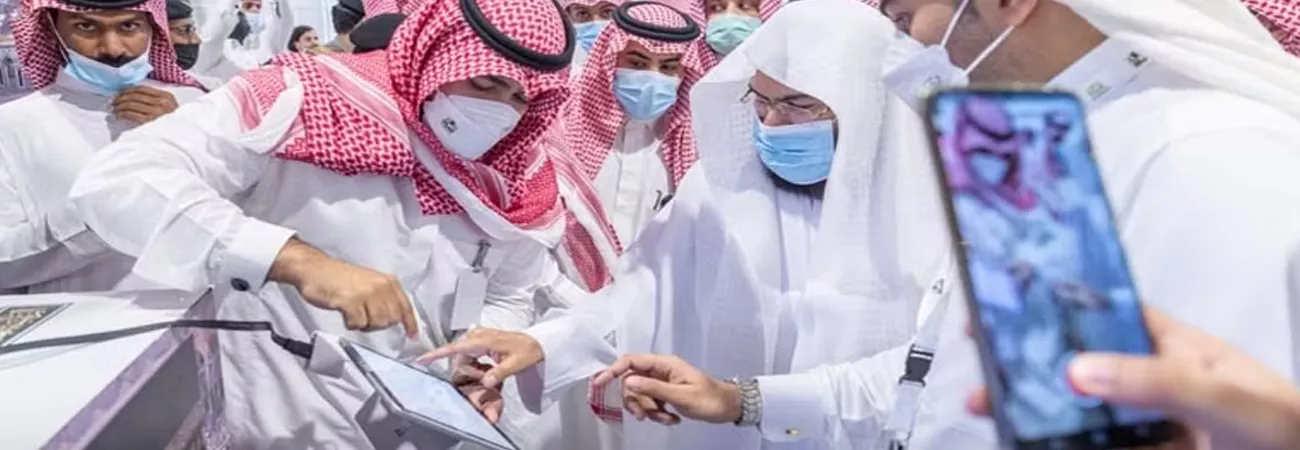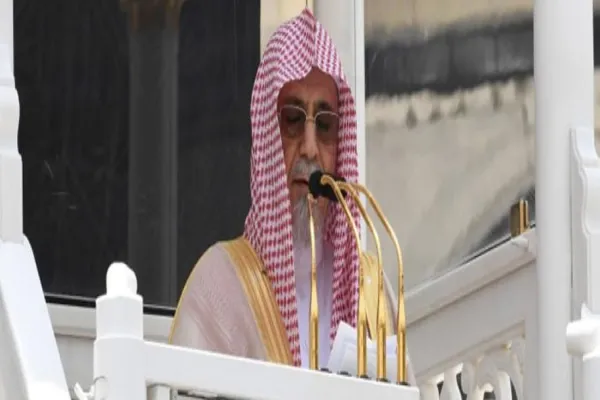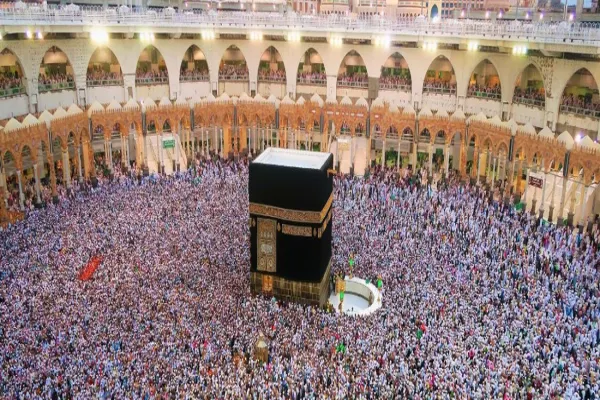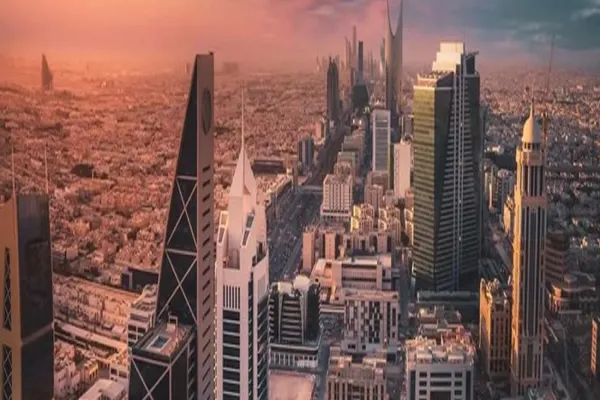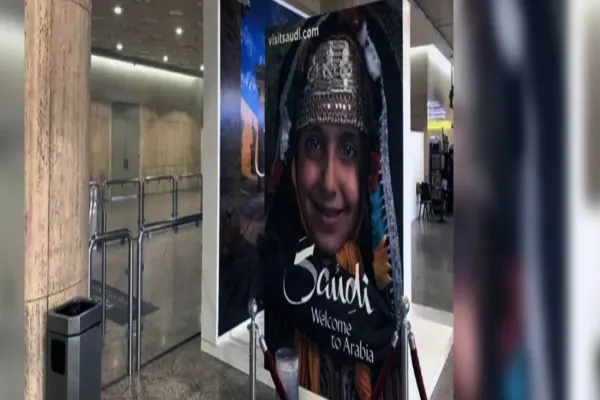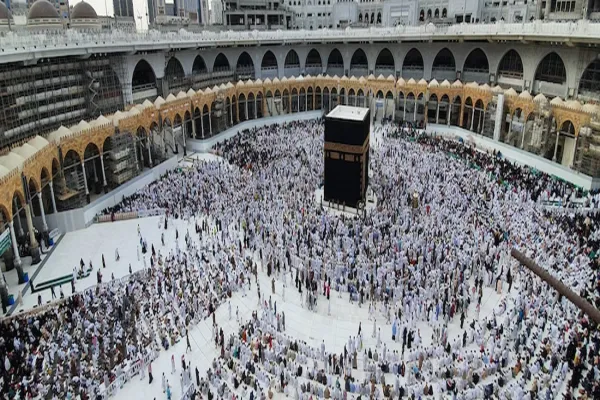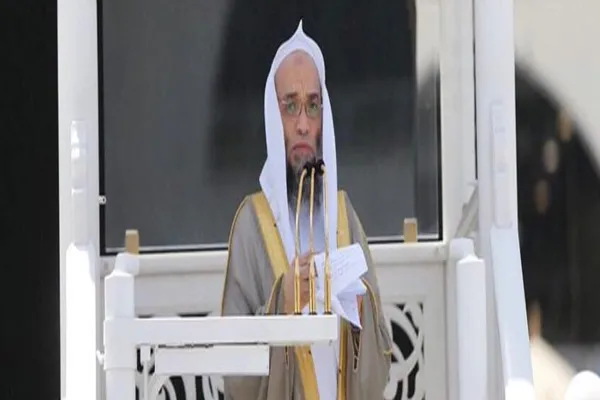PAK-SAUDI SERVICE
The Presidency of the Two Holy Mosques enhanced the experience of pilgrims and enriched them knowledgeably and culturally by organizing modern Ramadan exhibitions and museums represented by the Agency for Exhibitions and Museums Affairs at the Grand Mosque during the blessed month of Ramadan, in an unprecedented step since these exhibitions are an additional soft, enriching spiritual force and a valuable opportunity for millions of visitors, pilgrims, and pilgrims.
The General President for the Affairs of the Grand Mosque and the Prophet’s Mosque, Sheikh Dr. Abdul Rahman bin Abdulaziz Al-Sudais, asserted that the exhibitions of the Grand Mosque during the Ramadan season aim to highlight the services provided by the Kingdom in serving guests.
He further stressed that the role of the exhibition is to educate visitors and raise their awareness of the services, programs, and initiatives provided by the Presidency to Rahman’s guests through the distinguished pillars and expressive images.
Sheikh Al-Sudais highlighted the importance of digital and translated exhibitions that target visitors from all over the world, especially as they contain valuable contents that go deep into historical roots, and tell of the great developments witnessed by the Two Holy Mosques throughout the ages, especially during the Saudi era.
Seeing religious monuments
The exhibitions are an opportunity to see the archaeological and religious monuments that are included in the exhibition pavilions and their pillars and to introduce Saudi culture and its civilizational and technical development, in addition to the efforts it exerts in developing the efficiency of services and upgrading the capabilities provided to the visitors of the Two Holy Mosques.
Enriching experiences
To enrich the experience of the blessed Ramadan season, the Agency for Exhibitions and Museums Affairs at the Grand Mosque launched its Ramadan exhibitions in the expansion of King Abdullah – may God have mercy on him – who receives visitors daily from 10 am until the end of Tarawih prayers, as the Ramadan exhibitions in the third Saudi expansion received thousands of visitors.
Thousands of people attended the exhibition and visited the Grand Mosque, winning their admiration and approval. The Undersecretary General for Exhibitions and Museums Affairs, Engineer Maher bin Mansi Al-Zahrani, explained that the exhibitions contain three sections equipped with archaeological tools from the Grand Mosque and modern technologies used in the current era. This is so that the visitor can view them easily and easily.
The number of visitors who toured the exhibitions has reached more than half a million since Ramadan began, as working hours were increased in the last ten days until the dawn prayer to keep pace with the number of visitors and their abundance.
Saudi Giving March
The Ramadan exhibitions in the Grand Mosque in Mecca shed light on the march of Saudi giving in the service of the Two Holy Mosques and their Muslim pilgrims, enriching the experience of visitors and pilgrims with knowledge and cultural windows, and informing them of the amount of civilizational and technical development that the Two Holy Mosques enjoyed during the Saudi era.
Zamzam Well Exhibition.
The Zamzam Well exhibition’s first section was devoted to the blessed Zamzam Well and its journey throughout the Saudi era. It contains a television screen showing a documentary film about the blessed Zamzam well. This film reflects the development of its presentation and the speed of its arrival to those who visit the Sacred House of God.
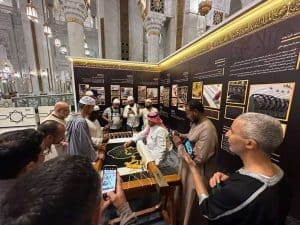
The exhibition also includes a detailed map showing the height and depth of the Zamzam well and the precise details it contains, another section of the Holy Kaaba, some samples similar to the Kaaba cladding, the materials used for washing and fixing it, and methods of manually weaving the cladding with high professionalism and precision.
During the month of Ramadan, the Presidency of the Affairs of the Two Holy Mosques held digital Ramadan exhibitions in the Grand Mosque containing 222 pieces of digital content, intended to bring services closer to the visitors of the Two Holy Mosques and the entire Islamic world, using digital technologies, an interactive tablet screen, and virtual reality technology.
The first section of the exhibition deals with the blessed Zamzam water and its journey throughout the Saudi era, starting from the era of King Abdul Aziz – may God have mercy on him – and ending with the era of King Salman bin Abdulaziz – and it contains a TV screen to display the movie (Zamzam Blessed Water) that simulates Zamzam water and its development. In the stages of its introduction and arrival at the Sacred House of God.
An exhibition of the Holy Kaaba
The exhibition includes another section on the Holy Kaaba, some samples similar to the Kaaba Kiswa, the materials used for washing and fixing it, and the methods of weaving the Kiswa by hand, with high professionalism and extreme accuracy.
Its third section includes the virtual exhibition of the Museum of the Two Holy Mosques collections. It uses virtual reality technology and D3 technology for its visitors and displays applications related to the Presidency’s services to visitors. The visitor is welcomed and greeted when he enters the Ramadan exhibitions of the Grand Mosque. The visitor begins his journey to explore the exhibitions sequentially through the three exhibitions.
The honorable visitor wanders around the Zamzam exhibition. This will enable him to view various information about the history and importance of this blessed water.
A detailed explanation is also provided on how to present it to pilgrims and Umrah performers in the Grand Mosque in Mecca. This is in the past and today. The exhibition includes visual and audio presentations, in addition to showing a documentary film under the name “Zamzam the Blessed Water”. It also displays a set of pictures and tools used in the Two Holy Mosques throughout the ages to present this blessed water.
The digital exhibition
After wandering around the Zamzam exhibition, he goes directly to the digital exhibition, where the visitor can take a virtual digital experience to take him on an interesting journey through the main important sites of the Holy Mosque of Makkah with virtual reality glasses, with a 3D experience, to see the Holy Kaaba closely, and watch the Black Stone and be able to see it virtually.
12 different corners
The exhibitions contain 12 different corners, including interactive corners, such as the Kaaba Kiswa corner, and digital interactive screens to search for services. Antiquities for Zamzam watering services are displayed, such as the jar, the bowl, the leather bag, and the display pieces of the Kaaba Kiswa that are more than 30 years old, with the display of Kaaba washing tools, spices, and incense.
Documentary films about Zamzam and the Kiswa of the Holy Kaaba are also shown in several languages on a large screen (2m * 3m) with seats for visitors to sit on to watch the films.
Credit: Independent News Pakistan: INP


